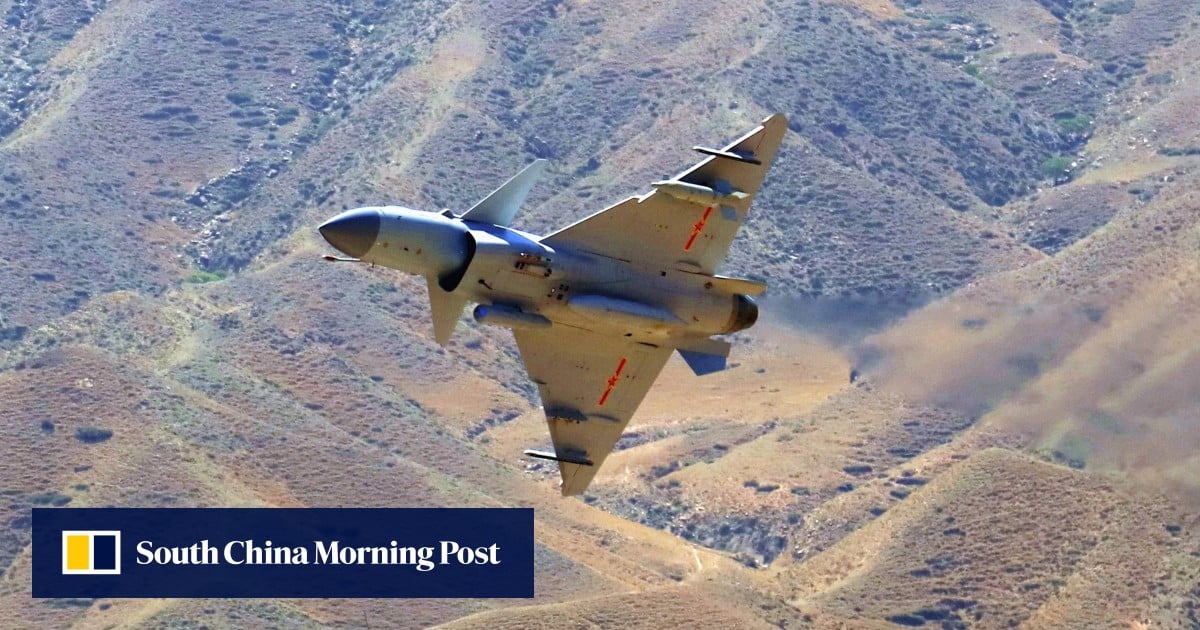- Tehran is said to be interested in buying 36 of the advanced Chinese fighter jets but finding the cash could be difficult
- Military analysts say now is not the time to exchange weapons for oil but believe Beijing is considering the move
Beijing is reluctant to let Iran have its J-10C lightweight fighter jetin a barter trade for oil or natural gas, according to military analysts. Reports of Tehran’s interest in the jet have been circulating on Chinese social media platforms for months, with the expiry in October last year of the UN’s 13-year arms embargo which prohibited Iran from buying foreign weapons like tanks and fighter jets.
“The key problem is Iran can’t pay dollars or euros in cash to China, they prefer using oil and natural gas to exchange weapons,” said Zhou Chenming, a researcher with the Yuan Wang think tank, a Beijing-based military science and technology institute.
“However, China has accumulated too much energy reserves… business is business, all arms deals want to make money. It’s impossible for China to get a bad bargain.”
Zhou said the dramatic deflation of Iran’s official currency, the rial, in recent years had forced the Tehran government to hold on to as many foreign currencies as possible.
An earlier report from online media platform Sina News said Iran might buy 36 Chinese fighter jets using half of the US$3 billion in financial help from Qatar. The money was offered by the Emir of Qatar Sheikh Tamim bin Hamad Al Thani when he met Iranian President Hassan Rowhani in Tehran in January last year. Closer security ties were seen as part of the 25-year strategic cooperation agreement signed in March between Beijing and Tehran to address economic issues amid crippling US sanctions on Iran.
Concrete details of the Comprehensive Strategic Partnership were not released, but according to China’s state broadcaster CCTV, it covers economic activity from oil and mining to promoting industrial activity in Iran, as well as transport and agricultural collaborations.
The J-10C is an upgraded version of China’s single-engine, lightweight, multi-role J-10, which was designed for air-to-air combat. The advanced version is powered by a modified engine designed for stealth and thrust vectoring.
Besides the J-10C, Iran could also be considering Russia’s MiG-35, Su-35 and Su-30SM fighter jets, according to Hong Kong-based military commentator Song Zhongping.
“China can offer two options, the less advanced FC-1 Xiaolong fighter and the more advanced J-10C. Both are lightweight fighter jets that are cheaper than the Russian aircraft,” Song said.
The unit price for China’s J-10 is between US$40 million to US$65 million, based on the configuration installed on the platform, compared with US$175 million for a MiG-35 Eurofighter Typhoon, or US$55 million for the less advanced MiG-35 Fulcrum.
The unit price for Russia’s Su-30SM is US$50 million per unit. In contrast, the US F-35 Lightning II is priced at US$110 million.
Shanghai-based military expert Ni Lexiong said China should prioritise its own economic considerations, after its bruising trade war with the US, which started in 2018, and the ongoing Covid-19 pandemic.
“Holding more cash and foreign currencies is always the top priority when dealing with an economic crisis. China doesn’t need so much raw petroleum amid current economic setbacks, with prices of oil and gas decreasing day after day,” Ni said.
“China doesn’t have an obligation to give Iran free arms. Indeed, Beijing needs to consider what the US and Israel would think if Beijing offered Tehran a cheaper arms deal.”
The White House told Congress on Wednesday it was proceeding with more than US$23 billion in weapons sales - including 50 F-35 aircraft, armed drones and other equipment - to the United Arab Emirates, in a deal approved by President Joe Biden’s predecessor Donald Trump.
Trade between Iran and China has been worth some US$20 billion annually in recent years, down from nearly US$52 billion in 2014 because of US sanctions imposed in 2018 after Trump unilaterally pulled the US out of a nuclear deal between Tehran and the world powers, saying it needed to be renegotiated.

China hesitant over J-10C barter deal with cash-strapped Iran: experts
Tehran is said to be interested in buying 36 of the advanced Chinese fighter jets but finding the cash could be difficult.

